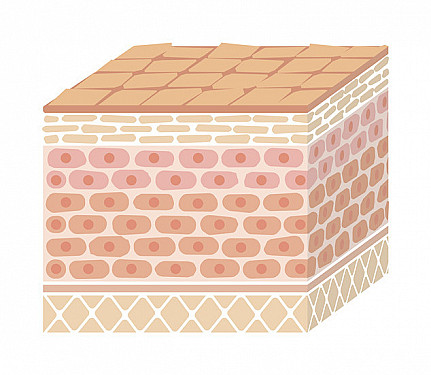
First, some good news: Merkel cell cancer is exceptionally uncommon. Roughly 1,600 cases occur in the US annually. But this rare skin cancer sometimes goes unnoticed initially. That’s worrisome because it often metastasizes early — that is, spreads to other parts of the body such as the lungs and bones.
Here’s what to know about Merkel cell skin cancer: where and how it starts, what it looks like, who is more likely to get it, how it’s diagnosed and treated — and most importantly, steps you can take to help prevent it.
Where and how does Merkel cell cancer start?
Merkel cells are tiny oval-shaped cells found in the outermost layer of skin. Seen close to nerve endings, they help with the perception of touch.
Rarely, these cells begin to multiply uncontrollably, creating clusters of cancerous cells. Typically the tumors occur in regions that receive greater sun exposure, such as the face, neck, and back of the hand.
Sun exposure isn’t the only factor, though. A virus called MCV, or Merkel cell polyomavirus, is thought to trigger development of this cancer in about 80% of all cases. Aging increases the risk of this cancer, and plays a role, too.
What does Merkel cell cancer look like?
It appears as a reddish or purplish bump on the skin and often grows rapidly. Most people don’t experience any pain or itching.
Unfortunately, the tumor cells may spread to different parts of the body, including the brain, lungs, bones, and other areas of the skin. This may occur early: nearly half of people with Merkel cell cancer have metastases when first diagnosed.
Who is most likely to develop Merkel cell cancer?
Certain factors increase risk for developing Merkel cell cancer:
- age older than 65
- high exposure to ultraviolet light from sunlight or tanning beds
- fair skin
- family or personal history of skin cancers
- gender (men are more than twice as likely to be affected than women).
People are also more likely to get this cancer if their immune systems aren’t strong because they
- take drugs that lower their immune response such as high doses of steroids
- have certain health problems such as blood disorders or HIV
- have had organ transplants and need to take immunosuppressive drugs.
What steps can you take to prevent Merkel cell cancer?
Protect your skin from the sun. Wear UV-protective clothing that covers your trunk, arms, and legs. Wide-brim hats can protect your scalp, face, and part of the neck. Regularly apply broad-spectrum sunscreen on all uncovered skin.
Do not use tanning beds. They increase your chance of developing skin cancers.
Visit your dermatologist regularly for a total skin check if you have had skin cancer, or if a family member (parent, sibling, or child) has had it.
Tell your dermatologist or medical team if you notice any skin changes. Any new mole, bump, or lump should be checked.
How do I find out if I have Merkel cell carcinoma?
If a dermatologist suspects you have Merkel cell cancer or another skin cancer, they will remove a small piece of the skin lesion to look at it under a microscope. This procedure will confirm if the lesion is skin cancer.
How is Merkel cell cancer treated?
Treatment depends on where the tumor is, its size, and whether it has spread. That can be determined by removing lymph nodes near the tumor and through scans.
- If the tumor has not spread: Surgical removal can be done to remove the tumor and a margin of normal skin around it.
- If cancer cells have spread to other parts of the body: Radiation treatment is an option. Chemotherapy, a treatment with medications, may be recommended, though it is not as effective as radiation. Immunotherapy, which can help the immune system recognize and kill cancer cells, is also an option in some cases.
There is a high risk that this cancer will come back after treatment. So people who have had it should regularly see a dermatologist or their cancer team for surveillance.
